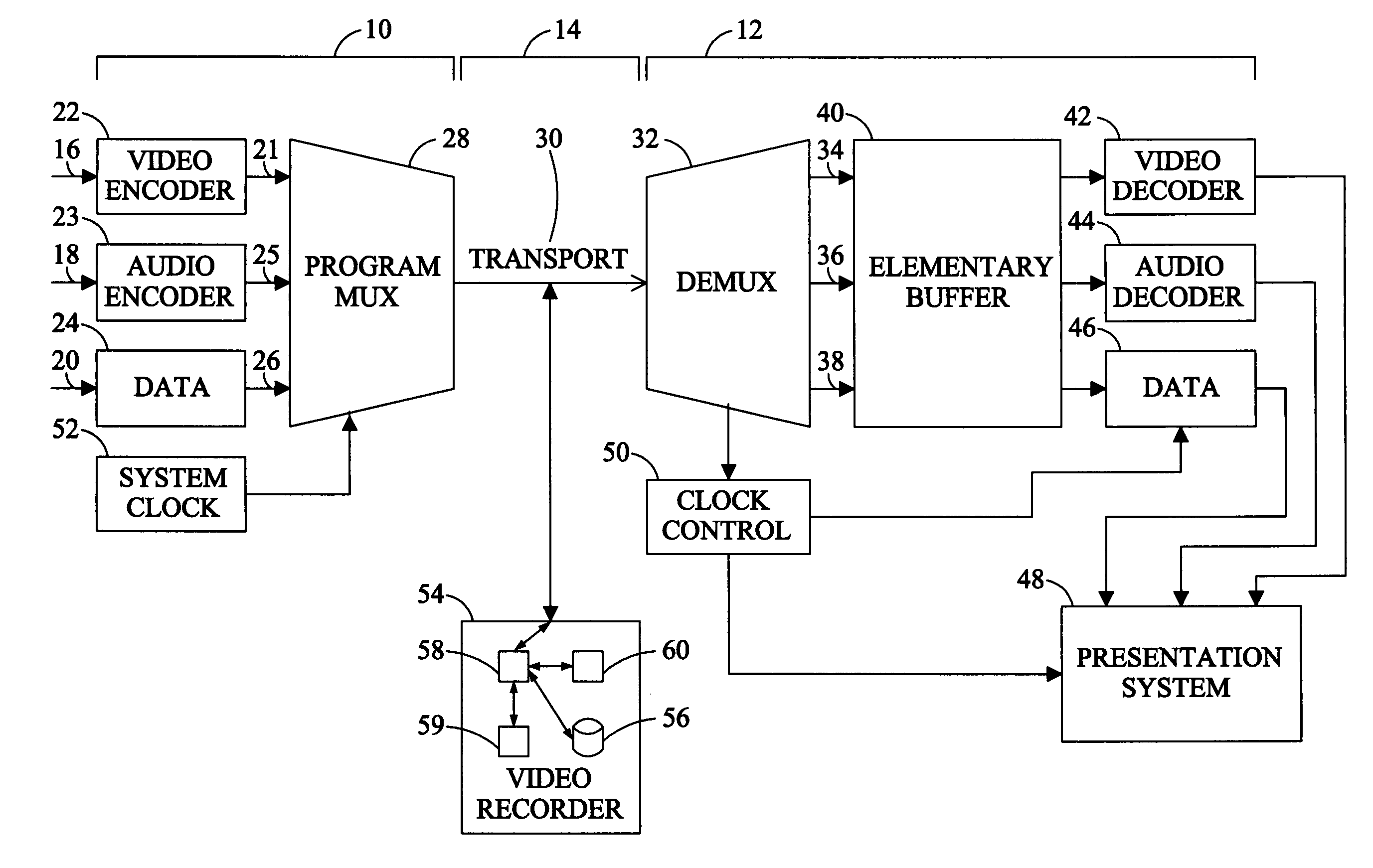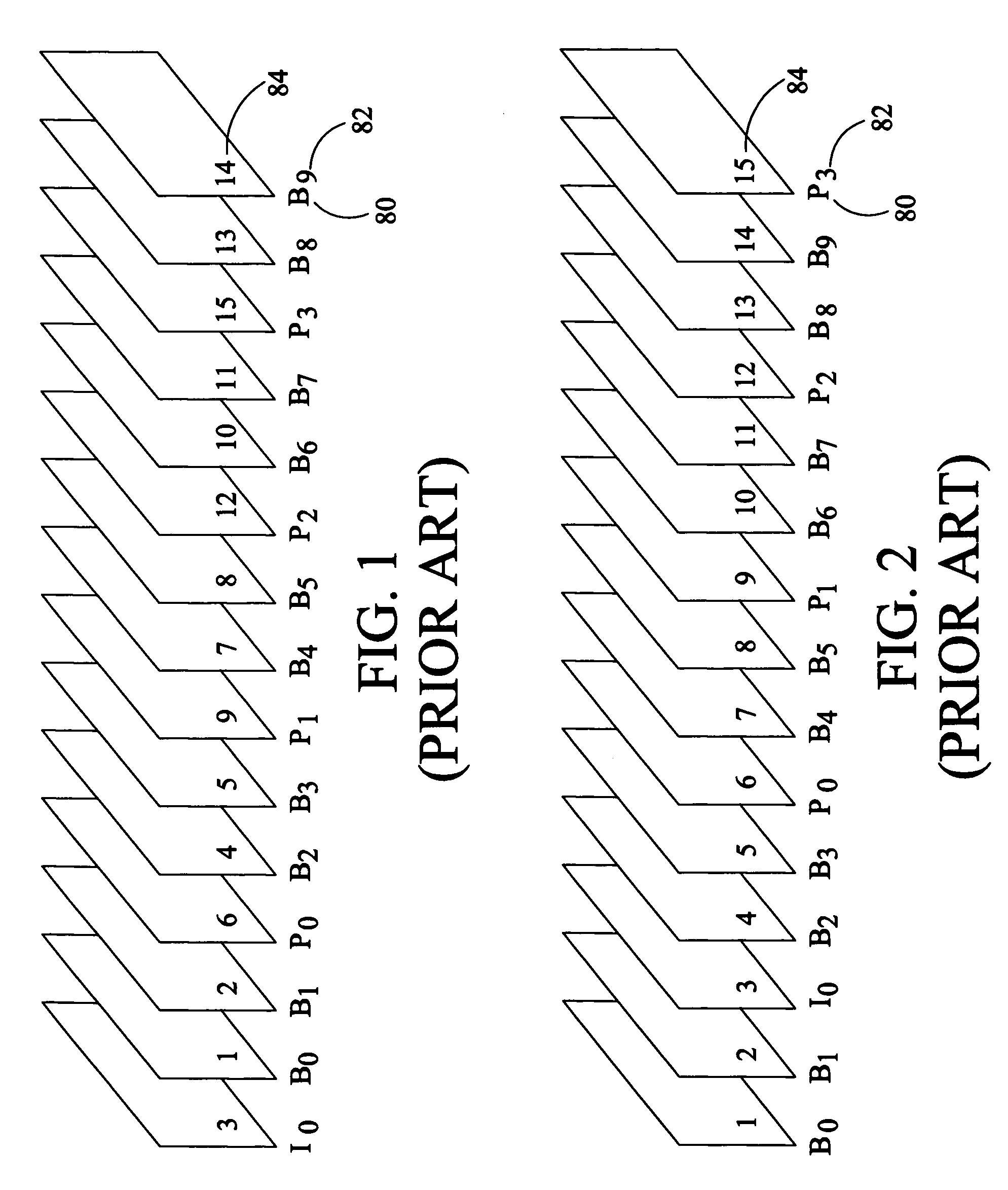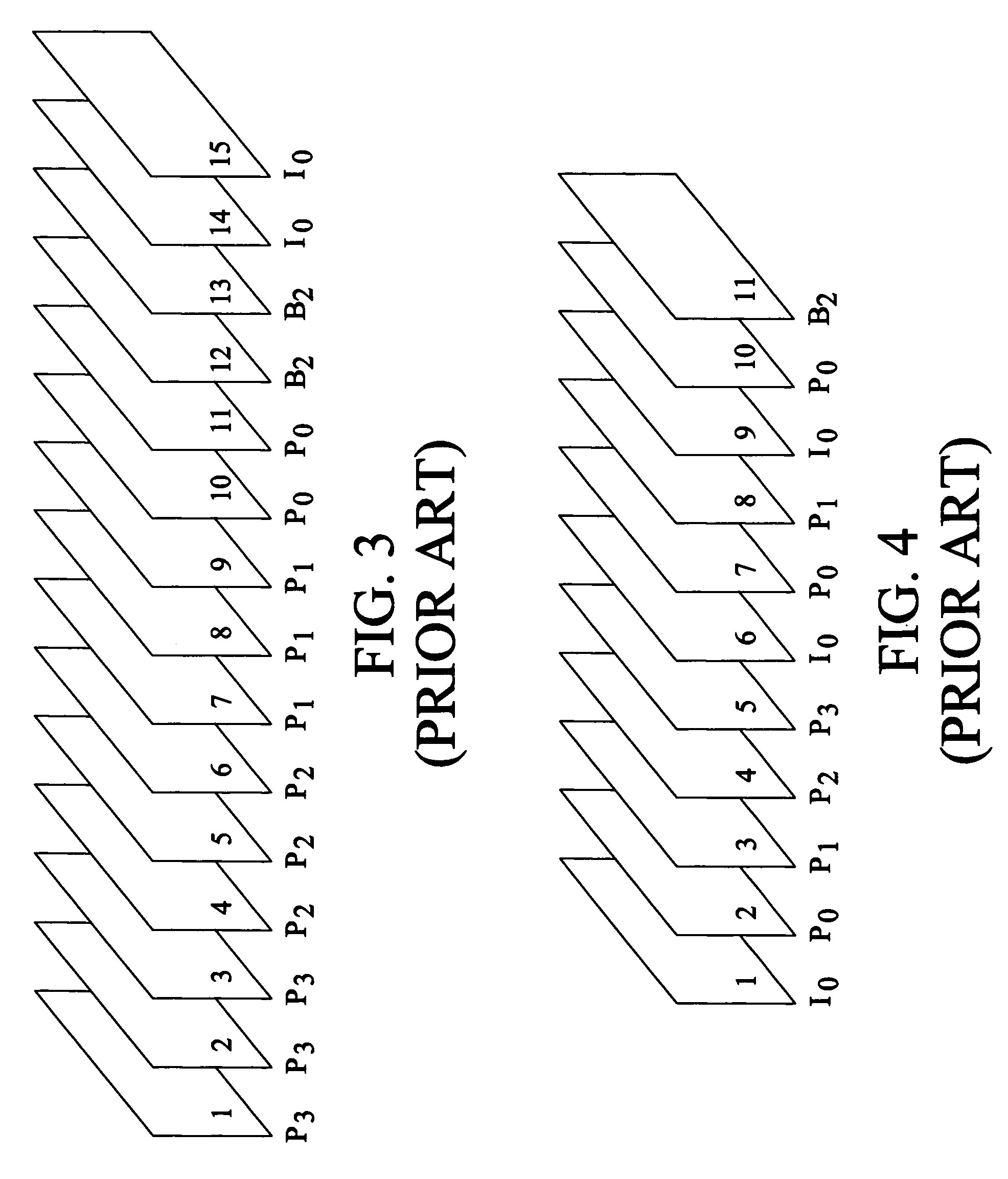Method for efficient MPEG-2 transport stream frame re-sequencing
a transport stream and frame resequencing technology, applied in the field of video recorders, can solve the problems of limited data rate and capacity, difficult to create trick play modes from mpeg transport data streams, and complicated creation of trick play video displays
- Summary
- Abstract
- Description
- Claims
- Application Information
AI Technical Summary
Benefits of technology
Problems solved by technology
Method used
Image
Examples
Embodiment Construction
[0023]Referring to FIG. 5, an MPEG-2 digital video system comprises an encoder 10 (indicated by a bracket) and a decoder 12 (indicated by a bracket) connected by a communication channel 14 (indicated by a bracket). In the encoder 12, the source data for the video 16, audio 18, and data 20 elements of a video production are converted to digital format and compressed, as appropriate, in separate video 22, audio 23, and data 24 application encoders. The compressed video 21, audio 25, and data 26 elementary data streams are input to a program multiplexing subsystem 28 where the elementary streams are packetized to form packetized elementary streams. The several packetized elementary streams are further packetized and multiplexed into a single transport stream 30 which is delivered to the decoder 12 over the communication channel 14. At the decoder 12, a demultiplexer 32 separates the transport stream 30 into the separate video 34, audio 36, and data 38 elementary streams. The elementary...
PUM
 Login to View More
Login to View More Abstract
Description
Claims
Application Information
 Login to View More
Login to View More - R&D
- Intellectual Property
- Life Sciences
- Materials
- Tech Scout
- Unparalleled Data Quality
- Higher Quality Content
- 60% Fewer Hallucinations
Browse by: Latest US Patents, China's latest patents, Technical Efficacy Thesaurus, Application Domain, Technology Topic, Popular Technical Reports.
© 2025 PatSnap. All rights reserved.Legal|Privacy policy|Modern Slavery Act Transparency Statement|Sitemap|About US| Contact US: help@patsnap.com



